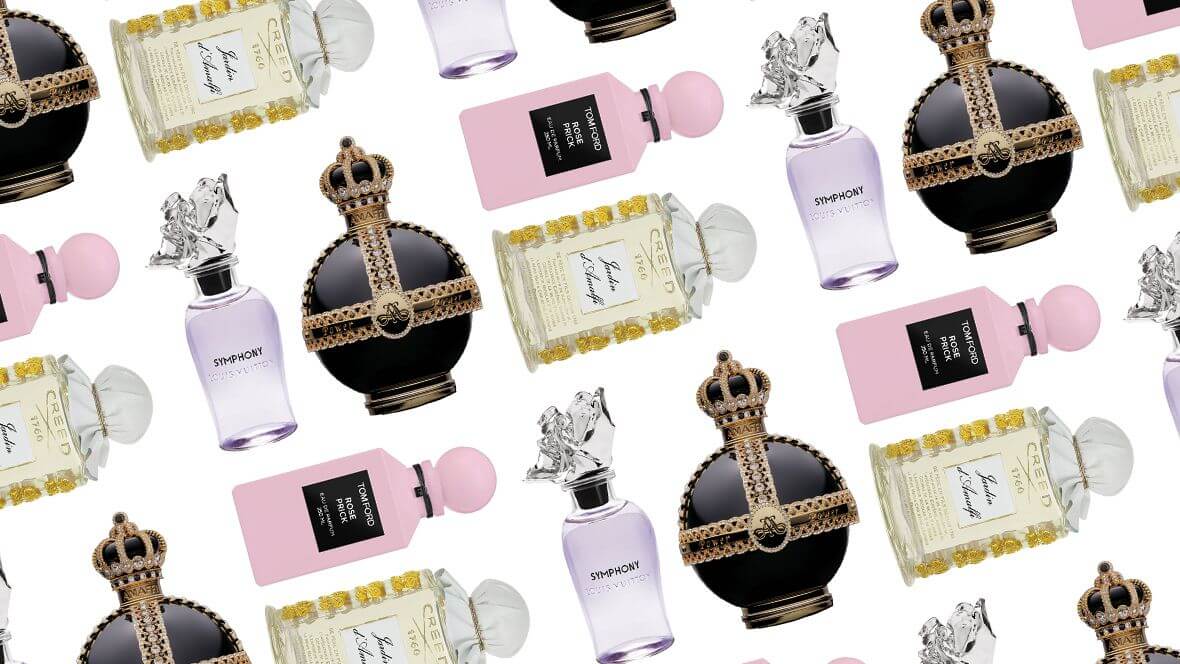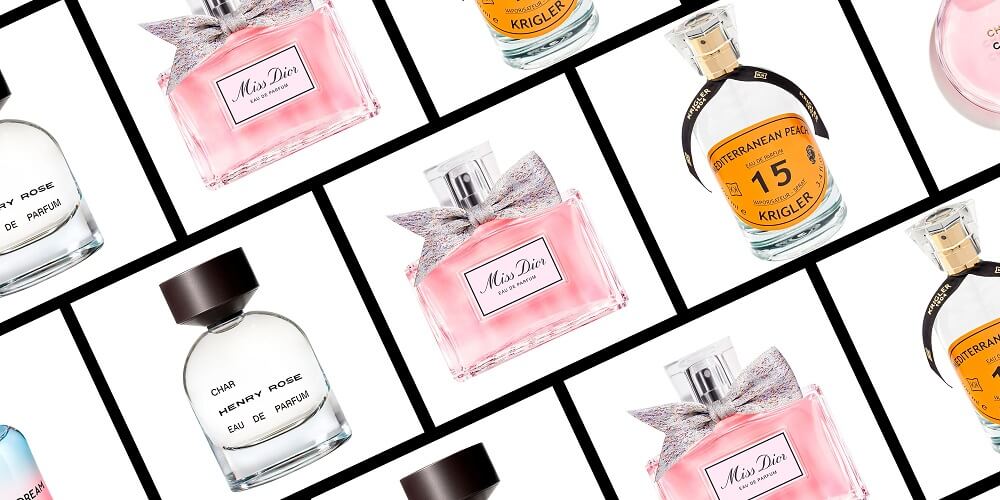Let’s delve into the intriguing world of differentiating fake perfumes!
According to a report by Wired, in 2017-2018, the UK saw a major wave of counterfeit body care products, including cosmetics and perfumes, with over 2.2 million units detained during this period. What’s more, as per the OECD, the value of the fake product imported to UK in 2016 was £13.6 billion, constituting 3% of the real imports, much higher figure of £9.3 billion in 2013.
Discovering the mask of deception can be a labyrinth. Identifying a fake might be challenging, but there are some clues to look for. First of all, trust your nose! If something smells funny or too strong, it could be an indication that it is not the genuine thing.
Then, examine the packaging. Is it slightly off? The logo may be slightly off, or the colours aren’t entirely accurate. Genuine perfumes usually come with high-quality packaging, sharp print, and no spelling mistakes.
Another thing to look at is the bottle itself. Is it cheap or a flimsy feeling? Genuine perfume bottles are often well-made and robust. In addition, check for a batch code or serial number on the bottle or box. It can be a warning sign if it’s missing or looks odd.
Finally, look at where you’re purchasing it from. If the price seems too good to be accurate or you’re buying from a dodgy website or street vendor, it’s best to avoid it.
Remember that you shouldn’t ignore your guts; if something smells fishy, it’s better to be safe than sorry!

Here are ten ways you can spot a fake perfume:
Check the Packaging:
Authentic perfumes are normally packed in standardised and quality packages, with clear and perfect printing. Look for any signs of inadequate quality, like smudged logos or misspelt words.
Inspect the Bottle:
Genuine perfume bottles are well-constructed and durable. If the bottle feels flimsy or cheap, it might be a fake.
Look for a Batch Code:
Original perfumes tend to have a batch code or serial number printed on the bottle or packaging. It might be a fake copy if it is missing or looks suspicious.
Trust Your Nose:
Embrace the wisdom of your olfactory senses, for a discordant note may signal a facade amidst the miasma of counterfeit odours. Authentic elixirs regale the senses with harmonious melodies, a symphony of balance and finesse.
Compare Prices:
If a perfume is offered at a lower price, you have yet to receive it, nor may it exist. Keep away from too cheap perfumes, more so when you are buying from unofficial sources.
Buy from Reputable Retailers:
Avoid purchasing perfumes from authorised retailers or the brand’s official website to lower the possibility of getting a fake one.
Check the Seal:
Authentic perfumes are mostly packaged shrink-wrapped or sealed in a box. If it’s missing or looks altered, it could be a counterfeit.
Inspect the Bottle Cap:
Original perfume bottle caps are usually exquisitely finished and perfectly tightened on the bottle. If it looks like it is cheap or if it doesn’t fit properly, most probably, it is a fake one.
Research the Seller:
If you purchase online, check out the seller. Scan reviews and ratings for their credibility and legitimacy.
Trust Your Instincts:
If something is going against your feelings or seems to be a scam, don’t purchase. Better safe than sorry regarding buying perfumes.
Bear in mind that a good faux perfume can be found only after some digging, but following these tips can minimise the risk of being tricked and ending up with a counterfeit item.

10 Reasons why fake perfumes sometimes is not a fake
We have had a few occasions where we received complaints from customers that our products were not legitimate original perfumes. After a thorough search, we finally discovered that most of these clients bought their perfume from suppliers in Dubai. And that this perfume was made differently in Middle Eastern countries. Let’s talk about why sometimes a perfume that seems fake might be legitimate:
Reformulation: Perfume formulas change with time for many reasons, such as ingredient availability or regulations. Therefore, even though the scent might look different, it could be the re-worked version of the same scent.
Variations in Batches: Perfumes may have slight differences between batches due to variations in manufacturing processes or storage conditions. Thus, the difference in smell or colour might not be enough to say it’s fake.
Grey Market Products: At times, perfumes sold at slashed prices could be the real deal from the grey market. These are authentic products sold through unofficial channels; therefore, they are bought at lower prices because they are bulk purchases or clearance sales.
Authorised Retailers: Several retailers, mostly smaller or independent, could sell genuine perfumes at reduced prices to attract more customers. Well, cheaper prices don’t necessarily mean fake if bought from a genuine seller.
Vintage Perfumes: Discontinued or vintage perfumes can also resurge in the market, which raises questions about their authenticity. Such authentic products could have different packaging or smells because they are old.
Limited Editions: Limited edition or seasonal perfumes can be packed in uniquely styled boxes or contain scents that are different from usual versions. Thus, a fake item may look like an original but is an edition product.
Expired Stock: Real perfumes stored incorrectly or poorly or for a long time may lose their original aroma or change form. Therefore, an expired perfume looks fake, but the original stocks can be covered in time.
Parallel Imports: Importing authentic goods from other countries that the manufacturer does not authorise is a parallel import. These products are the real deal, but they may have slight discrepancies compared to locally distributed ones.
Testing and Sampling: Some testers or samples provided by retailers are often based on different scents or packaging from the ones sold in retail stores. Therefore, what seems different in a tester is the genuine packaged product.
Thus, fake perfumes cause a problem, but a perfume that looks fake could still be an authentic product with some variation or special conditions. You should consider multiple factors and buy from reliable sellers to ensure you purchase the original product.

5 Steps to Determine Whether a Perfume Is Authentic
Here’s a breakdown of five steps to unravel the authenticity of a perfume:
High-Quality Packaging with Holographic Seals: Real perfumes usually come in packaging made from top-quality material, including a holographic seal that is hard to imitate. Typically, these seals have complex figures and patterns that change depending on the angle of view, making counterfeit goods more difficult.
Embossed Logos and Clear, Crisp Printing: Look closely at the logos with embossed images and the clear, sharp printing on the packaging. The logos of genuine perfumes are most often embossed or raised, adding a tactile dimension. The packaging printing should also be crisp and well-defined, without smearing or blurry. Poor craftsmanship, manifested, for example, in misspelt words or design inconsistencies, is one of the indications that the product is probably fake.
Inspecting the Bottle and Packaging: Check the general quality of the packaging and pay attention to all details. Authentic perfumes are usually kept in well-designed bottles featuring smooth & even glass and firmly affixed caps. The packaging must also be free of any evidence of crude process, e.g., uneven edges or unprofessional printing. Inconsistencies in design or construction are warning signs that the product might be a fake.
Batch Code Verification: Genuine perfumes often have a batch code or serial number printed on the bottle or their packaging. You can use this code to check the product’s authenticity by consulting the manufacturer or utilising internet databases. Lack of batch code, poorly written, or not matching the manufacturer’s records can say that the perfume is a fake.
Compare with Known Authentic Products: If you have access to a truly authentic version of the perfume, compare it side by side with the one you will buy. Check any changes in label, bottle form, and smell as well. Even slight dissimilarities like font or colour change could show that the product is fake.
Conclusion
Spotting a fake perfume is all about careful scrutiny and keen observation. You can identify counterfeited products much better by examining the boxes that include technological attributes such as holographic seals, embossed logos, and precise printing and inspecting the bottle and its packaging for clues of low-quality work, inconsistencies and spelling errors.
Also, checking the batch code and the product with the accurate known versions can further verify the authenticity. The perfumes should be bought from reputable retailers, and trust your instinct if something seems weird.
Following these steps and being watchful will lower the risk of buying fake perfumes, hence ascertaining you’re purchasing genuine ones.

